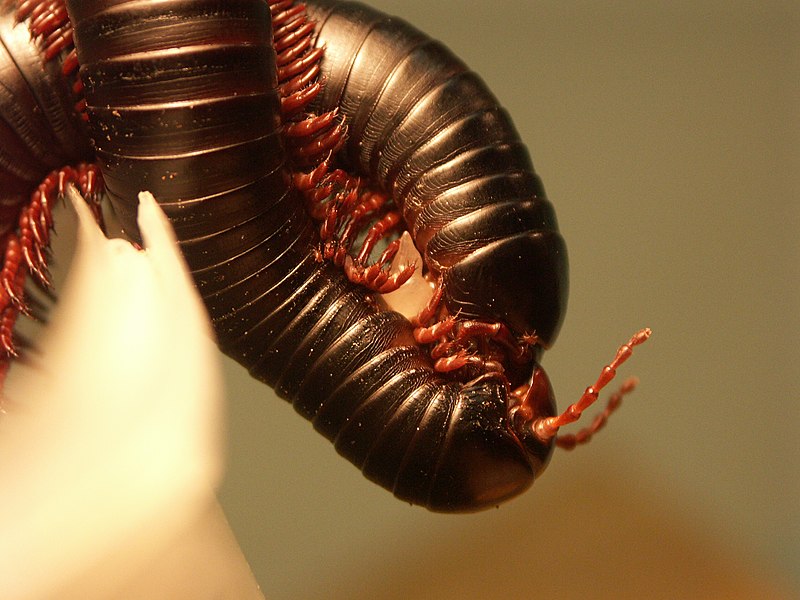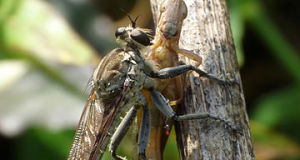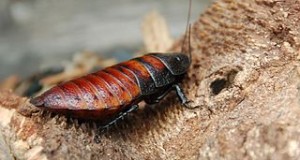In Part I of this article we looked at the importance of calcium, leaf litter and decaying wood in the diet of the African giant millipede (Achispirospreptus gigas) and its relatives.
Research Needed
Few field studies have been made of millipedes in the wild, and we therefore know little about their exact nutritional needs. Based on experience with related species, 
A Useful Millipede Diet
In addition to leaf litter and wood (please see Part I of this article), I feed most millipedes a mixed salad of yam, carrot, kale, cucumber, apple, banana and a wide variety of other fruits and vegetables. To this is added moistened insect gut-loading diet and tropical fish flakes, both of which supply necessary protein, and a bit of Forest Tortoise Food.
San Francisco Bay Prepared Tortoise Food is a convenient means of providing a wide variety of nutritious foods, and is readily accepted by many millipedes. I use this as an occasional supplement, or mix it into the regular salad. All food offered is powdered with Reptocal.
 That Reptile Blog – Reptile, Amphibian and Exotic Pet Care and Information
That Reptile Blog – Reptile, Amphibian and Exotic Pet Care and Information



I recently obtained two female african giant millipedes. I love them. I was interested in finding out how they get their protein in the wild. Also wondering if anyone might have males for sale. I would love to eventually get a male.
Hello Sanna, Frank Indiviglio here.
Thanks for your interest. Good question…not many direct observations of millipedes feeding in the wild have been published. However, what typically happens is that as the millipedes consume leaf litter and decaying wood, they also take in tiny invertebrates (springtails, nematodes), insect eggs, shed skins, droppings and other protein sources; if you take a look at a handful of damp leaf litter, you’ll see that it’s a veritable “soup” of organic material. Some species will feed upon animal carcasses as well, but I don’t believe this has been reported for Giant African Millipede.
Hatari Invertebrates is the best source; the staff is very knowledgeable and will pick out a male if you ask. I don’t see any listed right now (availability always varies) but keep an eye on their list. Some suppliers advertise on Kingsnake.com as well; not all will sex the animals, but smaller specialist breeders will.
Please let me know if you need any further information. Good luck, enjoy and please keep me posted.
Best regards, Frank Indiviglio.
Thanks for the info. I will definitely keep checking their site. I do have a vendor to buy males from. But am looking to get one cheaper than he has them for. I would like to get one in the next year or so if possible. Don’t want to miss out on the chance to breed my females. I will definitely let you know how things work out.
thanks
Sanna
Hello Sanna, Frank Indiviglio here.
Thanks for the feedback; I look forward to hearing how all progresses. We still have a lot to learn, so please keep notes and pass along your thoughts.
Good luck, enjoy and please keep me posted.
Best regards, Frank Indiviglio.